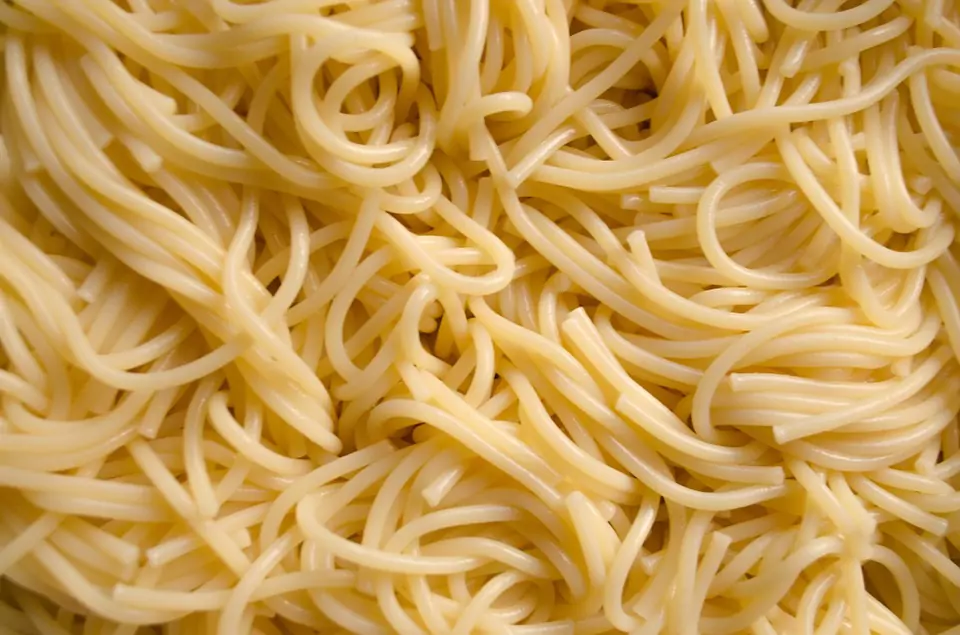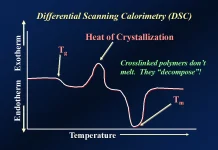In a previous edition of Professor’s Corner, a simple rubber band was used to illustrate how its macromolecular structure creates its unique properties.1 Among the most important and useful of these properties is its flexibility. The flexibility is a result of a very low glass transition temperature (Tg). While different rubber bands have different compositions and behave differently, a typical value for the Tg is -125°C.2 Under normal conditions of use, a rubber band may well be around 150°C above its Tg, making it very flexible and extensible. So, what is the Tg, anyway?
Glass transition temperature: Part 1
The Tg is the temperature at which a glassy, brittle material becomes rubbery and flexible. For example, consider the flexibility of a garden hose in midsummer. It is quite flexible. Now consider it on a cold winter day at -4°F (-20°C). You could likely break it with your bare hands! In the former case, the hose is above its Tg, while in the latter, it is significantly below.
To better understand the Tg, a brief discussion of morphology is helpful. Polymer morphology is defined by Malcolm Stevens as “…the structure, arrangement, and physical form of polymer molecules….”3 It depicts how the individual molecules relate to each other in 3D space. Broadly speaking, polymers possess two types of morphology: “amorphous” and “crystalline.” Amorphous polymers – those “without structure” – have very little order at the molecular scale, while crystalline polymers have a relatively high degree of order. The exceptionally long and entangled chain structure of polymers creates the amorphous regions and ensures that at least some degree of amorphous character is present in all polymers, including those that are UV- or EB-polymerized. So, a typical polymer sample will contain regions or domains that are predominantly amorphous and those that are crystalline – regions with relatively ordered alignments of polymer chains.
A simple “cooked spaghetti” model of a linear polymer is depicted in Figure 1. Looking closely, one can see areas where strands of spaghetti are strongly aligned with one another. These represent crystalline regions that are imbedded in a matrix of amorphous, randomly distributed, strands. Since no polymers are truly 100% “crystalline,” those containing some crystallinity are typically referred to as “semi-crystalline” and the crystalline domains within the polymer sample are called “microcrystalline regions” or “microcrystallites.” It is important to note that only the amorphous domains in a polymer sample will exhibit a Tg, a secondary thermodynamic phase transition. The microcrystalline regions, on the other hand, if present, may go through a primary phase transition similar to melting rather than just “softening.” In addition to exhibiting a Tg, then, semi-crystalline materials may also exhibit a Tm – a crystalline melting temperature.
While the examples given here represent linear polymers, branched and crosslinked polymers also contain significant amorphous character and, therefore, will, in principle, exhibit a Tg. Crosslinks do not inherently preclude segmental motion unless the crosslink density is too high. It should be noted that if the concentration of amorphous domains is too low, a polymer may not exhibit a Tg experimentally. Also, if a crosslinked polymer, such as those that are energy-cured, has a sufficiently high crosslink density, it may not exhibit a Tg because it may be too rigid to allow segmental motions, even when it is predominantly amorphous.
What is happening at the molecular scale when a polymer goes through a Tg? Stevens refers to this transition as the onset of long-range segmental motion and describes a “segment” as 20 to 50 chain atoms.4 Below the Tg, amorphous regions within the sample are locked in a glassy, rigid structure. This means that as the temperature – a measure of the average kinetic energy of the molecules – rises, the sample is restricted to increased molecular vibrations rather than concerted segmental motions. At the Tg however, a number of changes begin to occur, any one of which, in principle, can be used to determine the Tg experimentally. These changes include – but are not limited to – changes in specific volume of the sample, changes in the heat capacity of the polymer, changes in the ability of the polymer to store or dissipate energy, and others.
In the next edition of Professor’s Corner, Part 2 of this discussion of glass transition temperature will provide information about various key methods used to measure the Tg of polymers, including dilatometry, differential scanning calorimetry (DSC) and dynamic mechanical analysis (DMA). These methods will be compared and contrasted in terms of their accuracy and sensitivity. Different analytical methods often give different results for the Tg of a given polymer and possible reasons for these differences will be presented.
Technical questions?
What are your technical questions about polymer science, photopolymerization or other topics concerning the chemistry and technology of UV/EB polymerization? Your questions will help guide future topic decisions for this column. Please submit your questions via email directly to Dianna Brodine, managing editor for UV+EB Technology, at dianna@petersonpublications.com.
References for Further Study:
- “Professor’s Corner,” UV+EB Technology, 5, No. 3, 3rd Quarter, 2019, pp. 12, 13.
- https://science.howstuffworks.com/innovation/everyday-innovations/elastic5.htm
- Stevens, Malcolm P. Polymer Chemistry: An Introduction, 3rd Edition, 1999, p. 61.
- ibid., p. 70.
 Byron K. Christmas, Ph.D.
Byron K. Christmas, Ph.D.
Professor of Chemistry, Emeritus
University of Houston-Downtown
b4christmas@gmail.com







